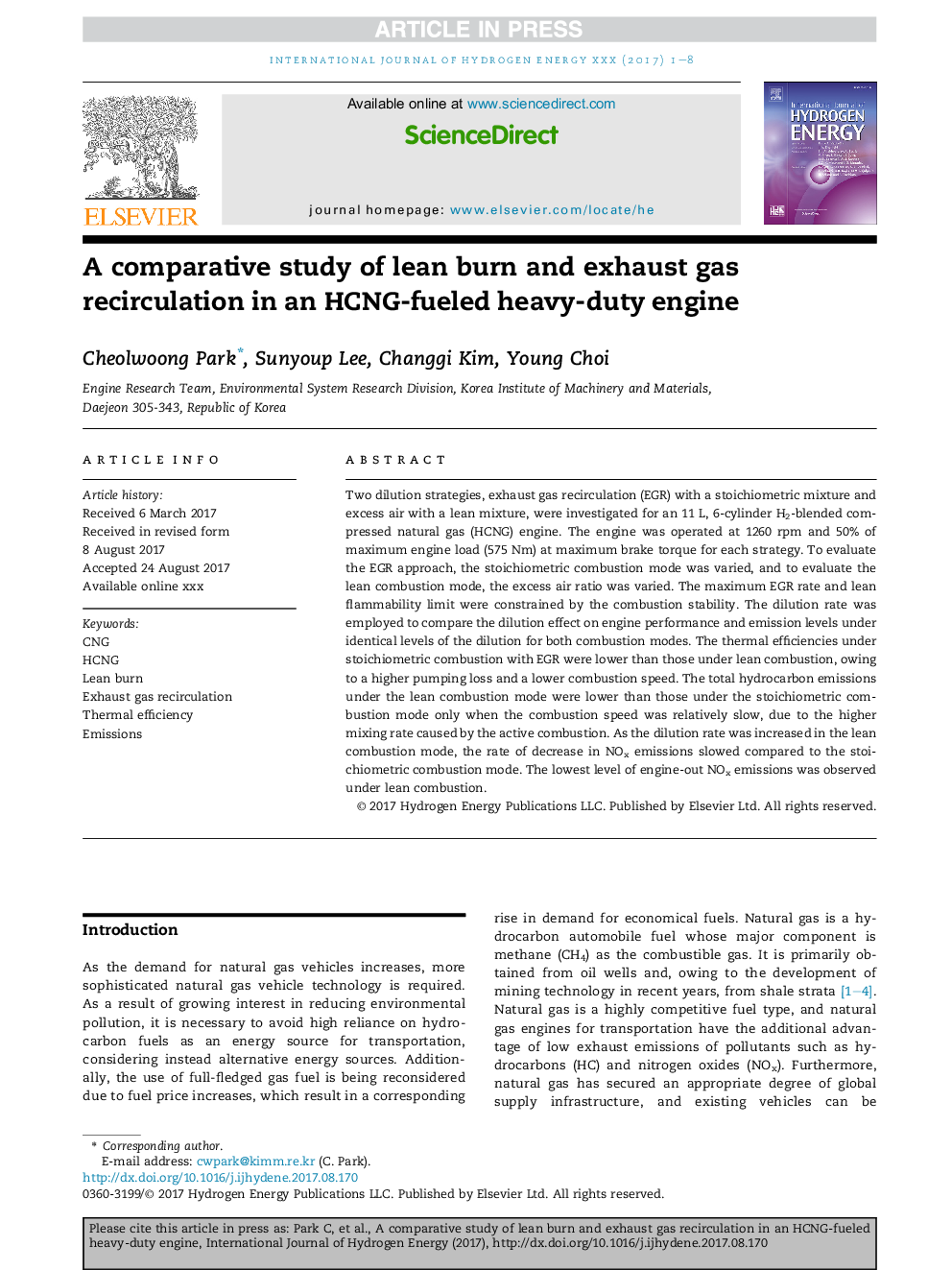| Article ID | Journal | Published Year | Pages | File Type |
|---|---|---|---|---|
| 5145171 | International Journal of Hydrogen Energy | 2017 | 8 Pages |
Abstract
Two dilution strategies, exhaust gas recirculation (EGR) with a stoichiometric mixture and excess air with a lean mixture, were investigated for an 11Â L, 6-cylinder H2-blended compressed natural gas (HCNG) engine. The engine was operated at 1260Â rpm and 50% of maximum engine load (575Â Nm) at maximum brake torque for each strategy. To evaluate the EGR approach, the stoichiometric combustion mode was varied, and to evaluate the lean combustion mode, the excess air ratio was varied. The maximum EGR rate and lean flammability limit were constrained by the combustion stability. The dilution rate was employed to compare the dilution effect on engine performance and emission levels under identical levels of the dilution for both combustion modes. The thermal efficiencies under stoichiometric combustion with EGR were lower than those under lean combustion, owing to a higher pumping loss and a lower combustion speed. The total hydrocarbon emissions under the lean combustion mode were lower than those under the stoichiometric combustion mode only when the combustion speed was relatively slow, due to the higher mixing rate caused by the active combustion. As the dilution rate was increased in the lean combustion mode, the rate of decrease in NOx emissions slowed compared to the stoichiometric combustion mode. The lowest level of engine-out NOx emissions was observed under lean combustion.
Related Topics
Physical Sciences and Engineering
Chemistry
Electrochemistry
Authors
Cheolwoong Park, Sunyoup Lee, Changgi Kim, Young Choi,
